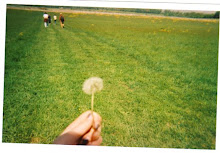Julie & Julia
Look, a blog post about a movie about a blog! How very novel!
Anyhow, Julie (Powell, Amy Adams) & Julia (Child, Meryl Streep) tells two parallel stories, each about a married woman, unsure what to do with her life, who decides to write about cooking. One of them is in 2000's Queens, and the other is in 1950's Paris, writing the cookbook that will inspire the first to write a blog (which inspired the movie) about cooking all the recipes in it. (Trippy, huh?) Adams' Julie Powell is sweet on the surface but prone to histrionics, and Streep's Julia Child is smotheringly exuberant. From beginning to end, I pretty much hated them both.
But that's okay, in a way. Because their stories, if you can call them that - for this movie had nearly no plot, and only once (after about an hour and ten minutes) had me unsure about what would happen next - are merely furnishings. Julie & Julia is a visual delight. Many have said that the recipes are the true star of this film, and they would be close, but not quite on target. They actually share the spotlight with the sets, the costumes, and the wonderful cinematography that made me want to be there, in New York, in Paris, in gorgeous kitchens and front rooms and restaurants. And eating delicious French food, of course.
I think Meryl Streep has been unfairly praised for her performance. In the middle of the movie, Julie and her husband watch a classic (and rather gruesome) Dan Akroyd skit that appears to be the source of Streep's Julia Child, rather than the real Julia. Amy Adams I must praise simply because she is not the usual perky, childlike Amy Adams character, but that isn't saying much. The best performance, in my opinion, was by a cute ginger cat.
There is also a hilarious scene involving lobsters that is not to be missed.
Friday, January 1, 2010
#1 - The Science of Sleep
The Science of Sleep
I had already seen this movie, but I wanted to show it to Sheila, because she loves Amélie, which reminded me of The Science of Sleep when I saw it. Like everything Michel Gondry touches, The Science of Sleep is full of whimsical artistic touches, with animation that makes you gasp at how well it works and wonder why no one ever thought of it before. Except I think Sleep was Gondry's baby, because the art, and the strange wonder of the process, and the strange magic of dreams are all tied together and threaded through the narrative. At its heart, The Science of Sleep is a love story, but it takes place in a world where things don't always turn out okay - it isn't about happiness, it's about hope.
I liked watching it for a second time because it's such a rich and - well, I don't want to say cluttered world, but it's a visual assault at times of tiny details, and it opens itself up a little more with each viewing. I love the almost-clumsy realness of the characters, I love seeing how friendships form and I get a little window into the lives of ordinary people with strange and wonderful inner landscapes.
Quick rundown of plot: this movie, which is in three languages (French, English, Spanish) is about a charming but staggeringly naïve young man named Stéphane Miroux (played by the cause-you-to-spontaneously-burst-into-flames-and-drop-dead sexy Gael García Bernal), who is returning to France to live with his mother after his Mexican father dies of cancer. He loves to invent things and create art, and he is extremely fascinated by mental phenomena, by dreams and the connections between people. Since childhood, he has had trouble distinguishing dreams from reality. He meets Stéphanie (quiet and graceful Charlotte Gainsbourg), a fellow artist whose apartment is across the hall from his. Unfortunately, nothing in Stéphane's life is simple, except his memories.
I had already seen this movie, but I wanted to show it to Sheila, because she loves Amélie, which reminded me of The Science of Sleep when I saw it. Like everything Michel Gondry touches, The Science of Sleep is full of whimsical artistic touches, with animation that makes you gasp at how well it works and wonder why no one ever thought of it before. Except I think Sleep was Gondry's baby, because the art, and the strange wonder of the process, and the strange magic of dreams are all tied together and threaded through the narrative. At its heart, The Science of Sleep is a love story, but it takes place in a world where things don't always turn out okay - it isn't about happiness, it's about hope.
I liked watching it for a second time because it's such a rich and - well, I don't want to say cluttered world, but it's a visual assault at times of tiny details, and it opens itself up a little more with each viewing. I love the almost-clumsy realness of the characters, I love seeing how friendships form and I get a little window into the lives of ordinary people with strange and wonderful inner landscapes.
Quick rundown of plot: this movie, which is in three languages (French, English, Spanish) is about a charming but staggeringly naïve young man named Stéphane Miroux (played by the cause-you-to-spontaneously-burst-into-flames-and-drop-dead sexy Gael García Bernal), who is returning to France to live with his mother after his Mexican father dies of cancer. He loves to invent things and create art, and he is extremely fascinated by mental phenomena, by dreams and the connections between people. Since childhood, he has had trouble distinguishing dreams from reality. He meets Stéphanie (quiet and graceful Charlotte Gainsbourg), a fellow artist whose apartment is across the hall from his. Unfortunately, nothing in Stéphane's life is simple, except his memories.
Subscribe to:
Comments (Atom)
